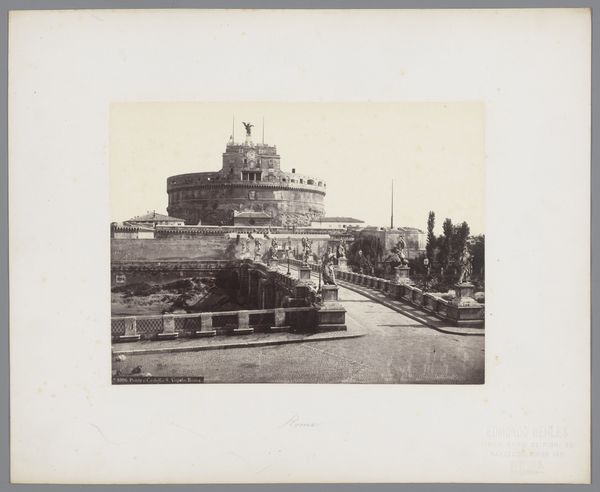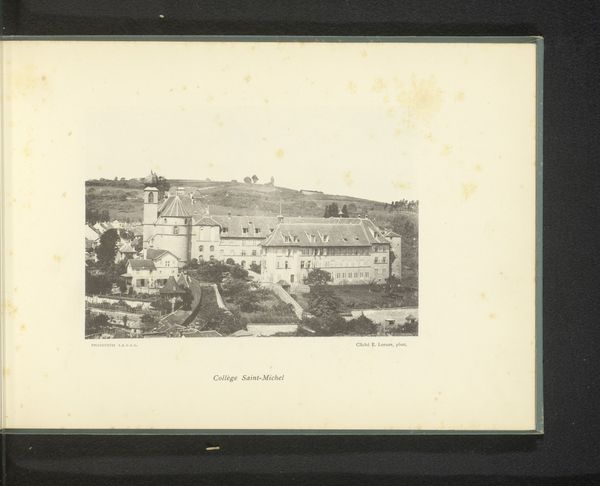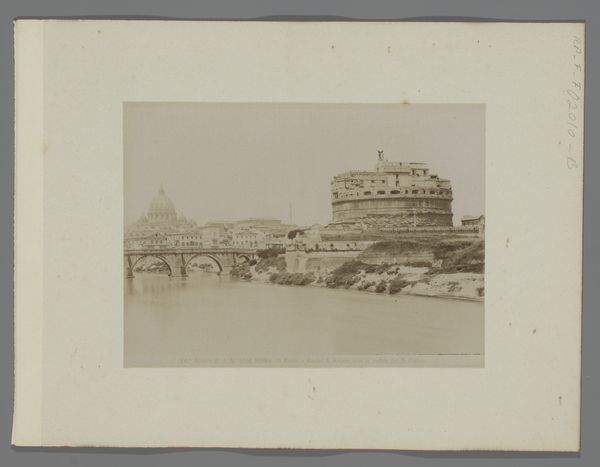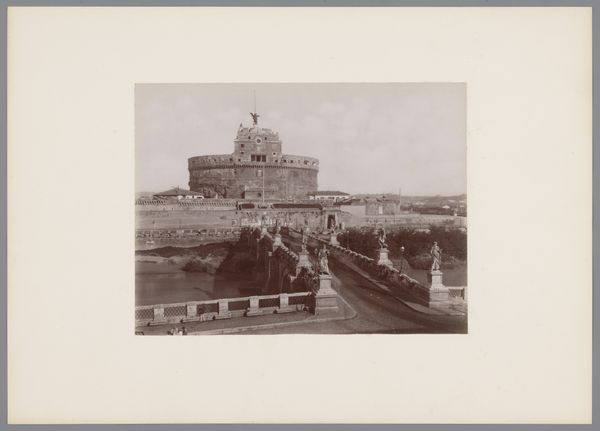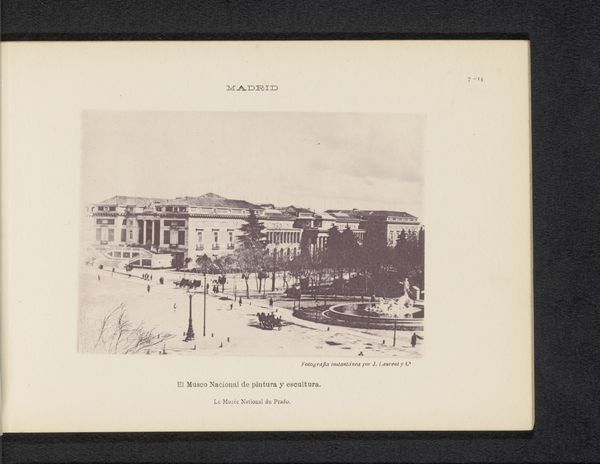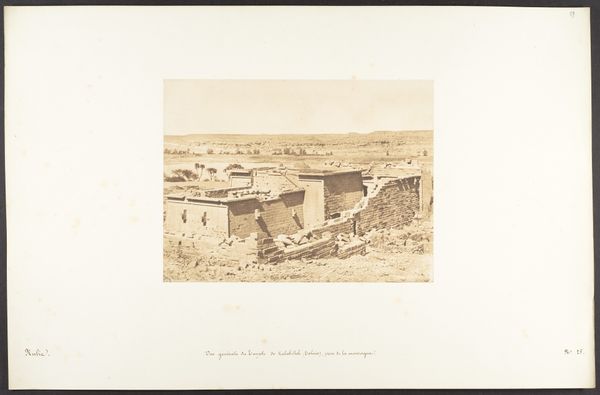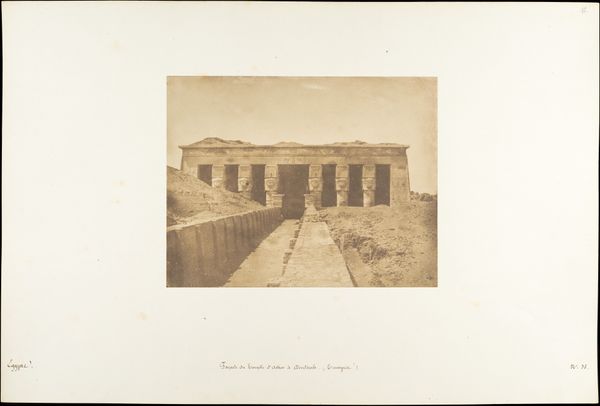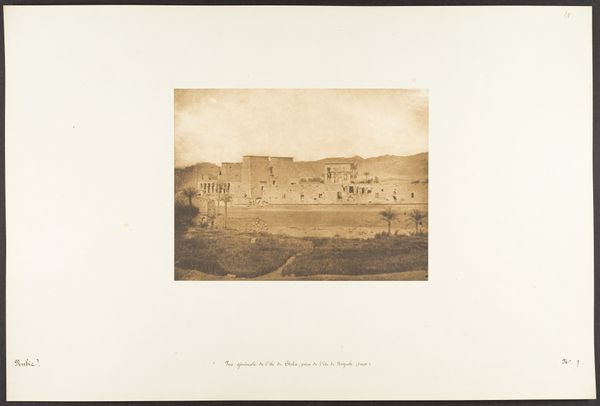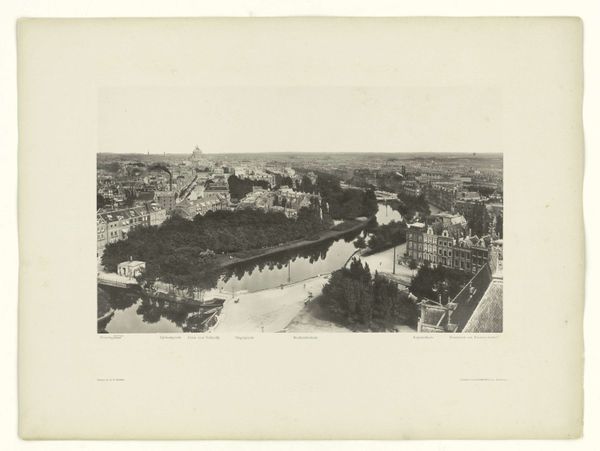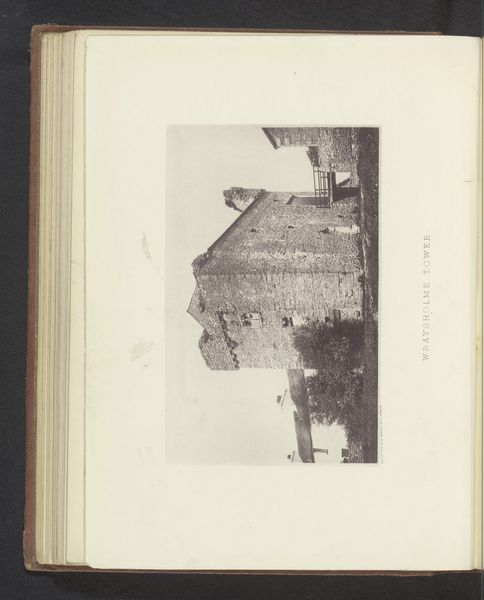
Dimensions: height 222 mm, width 279 mm
Copyright: Rijks Museum: Open Domain
Editor: Here we have a photograph titled "Bridge of St. Angelo, Rome," dating from before 1890, artist unknown, rendered as a gelatin-silver print. The sepia tones lend it a distinctly historical feel, and the sheer monumental quality of the Castel Sant'Angelo dominates the scene. How might we unpack this image? Curator: Let’s consider the materiality. A gelatin-silver print, a relatively new medium at the time, allowed for mass reproduction. What does that tell us about access to and consumption of images of Rome? Editor: Well, the availability of such prints suggests a burgeoning tourism industry and a growing market for affordable keepsakes. Curator: Precisely! Think about the labor involved: the photographer, the technicians preparing the chemicals, the printers producing multiples. This wasn’t a solitary artistic endeavor in the Romantic sense. What story does that background tell? Editor: It shifts the focus from individual genius to a more collaborative, almost industrial, mode of image production. This democratisation of images, although still framed by access to materials and technologies. How does that affect our understanding of “art”? Curator: Exactly. Does widespread production cheapen the experience? Or does it facilitate an appreciation, making grand tours more available as image or object, while preserving the real destination? The context, it turns out, shapes meaning. Editor: I never really considered how the processes of photography would contribute to or devalue Romantic ideas. Thanks! Curator: Likewise! Looking at art through a material lens always yields surprises.
Comments
No comments
Be the first to comment and join the conversation on the ultimate creative platform.
